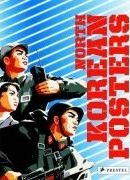North Korean Cigarette Production: Chinese Cigarettes Disappear
Daily NK
Moon Sung Hwee
8/12/2008
The market share of North Korean cigarette manufacturers has been increasing because North Korean cigarette factories have turned their gaze on domestic low-priced brands instead of counterfeit products.
A source from North Korea explained on the 8th that “There are lately dozens of cigarette brands which are being produced in North Korea, from low-priced ones to expensive ones made for high officials. Now, we rarely see people looking for foreign-made cigarettes in the markets.”
He added that “We can see 500 won per pack cigarettes and also cheap brands, like 300 won cigarettes which are made by individuals. When compared to rice prices, cigarette prices have sharply declined, as well as their quality having advanced when compared to the pack price.”
According to the statistics of the Korean International Trade Association, since 2000 imports of Chinese cigarettes have increased every year and in 2003, reached a maximum of 9.4 million dollars.
The source continued, “Competition to obtain Chinese cigarettes among Cigarette smugglers was keen, but now, consumers of North Korean cigarettes are increasing in number and the productivity of manufacturers is increasing as well. Therefore, individuals who produced cigarettes at home took a heavy blow to their business.”
North Korean cigarette makers converted from counterfeit to private development
Since the early 1990s, North Korea has felt keenly the necessity of earning foreign currency after suffering the aftereffects of the collapse of socialism in Eastern Europe. Accordingly, North Korean authorities have had an interest in producing and trading drugs and counterfeit cigarettes that need a low initial investment and quickly convert into money. Since 1992, North Korea has mass produced imitations of Mild Seven, Crown, 555, Dunhill and other international brands.
When suffering the “March of Tribulation” in the late 1990s, middle managers started taking an interest in counterfeit cigarette markets, which had been occupied by the authorities. In Nampo, Pyongsung, Pyongyang and other big cities, with the appearance of counterfeit cigarettes made by individuals, competition between the national cigarette traders and private manufacturers in the jangmadang started. Workers of cigarette factories kept secretly packing papers of the counterfeit cigarettes and sold them to the private manufacturers.
The North Korean authorities eventually took measures to punish the private manufacturers, to confiscate their products and search the workers’ bodies one by one.
However, after printers were allowed to be used in some factories related to IT departments of universities in 2002, managers of printers being in collusion with private manufacturers started printing the packing papers of cigarettes.
Production of tobacco leaves privately, manufacturing of cigarettes by the factory
After the start of the 2000s, North Korean authorities turned their gaze on domestic demand for cigarettes. The biggest North Korean cigarette factory is Ryongsung Cigarette Factory, where most counterfeit cigarettes made by North Korea were produced. As sales increased since 1997, the No. 39 Department of the Workers’ Party, which operates, accumulates and manages Kim Jong Il’s slush funds, has been directly operating the factory. The top quality counterfeit cigarette in North Korea, CRAVEN “A,” so called “Cat cigarette” by North Koreans, are produced in the factory.
The past price of CRAVEN “A” was much more expensive than Chinese cigarettes, such as Hongmei, BAT, Zhangbaishan and Tianping, being equivalent to two kilograms of rice. However, among cadres and the wealthy they were excessively popular. At the time, Chinese brands of cigarette in North Korea were generally valued at around the price of one kilogram of rice.
With profits increasing since 2003, North Korean authorities have tried to increase production by re-opening ruined factories that had closed their doors for lack of resources during the March of Tribulation.
In 2002, “Rasun” and “Sunbong,” which were produced in cooperation with Chinese entrepreneurs, came out in the Rajin-Sunbong area at a lower price than Chinese cigarettes.
Competition between factories to produce high quality and tasty cigarette toughens
Meanwhile, some of private manufacturers who went under in the competition have disappeared from the cigarette market or been merged with big factories.
There is no reason for being poor if North Korea works like it produces cigarettes
The source said that “These days, affiliates with cigarette factories buy dried tobacco leaves from individuals.”
According to the source, on seeing the high quality of cigarettes, people currently say, “That’s the reason why we should open and reform our market and system. If we produce other goods like we produce cigarettes, we won’t have any reason for being poor anymore.”
The Ryongsung Cigarette Factory in Pyongyang produces “Pyongyang,” “Geunseol (construction),” “Hyunmoo (a kind of mythological animal),” “GGoolbeul (Honey Bee),” “MT. Daesung,” “Dongyang (the Orient),” “Saseum (Deer),” and “Galmaegi (Sea Gull)” and the Sungcheon Cigarette Factory produces “Haedangwha (Sweetbrier),” “Yonggwangro (Furnace),” “Deungdae (Lighthouse),” and “Manbyungcho (a name of a herb).”
Koksan Factory in Hoiryeong produces cigarettes for soldiers; “Baeseung (ever-victorious),” “Ildangbaek (a match for a hundred),” “Chobyung (Sentry),” and “Poongnyon (a fruitful year).”

